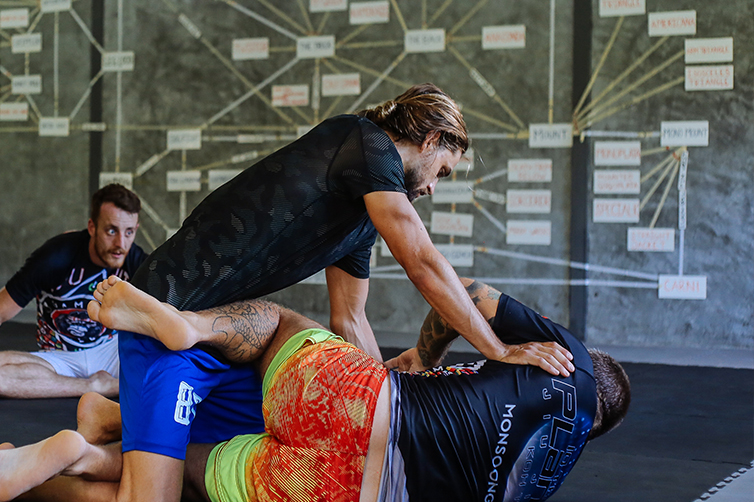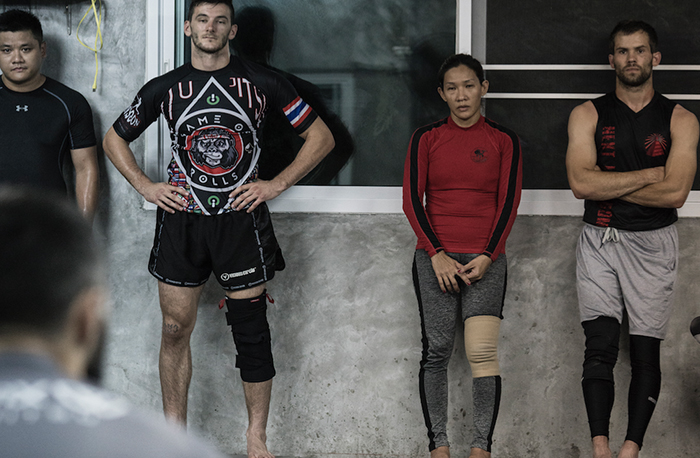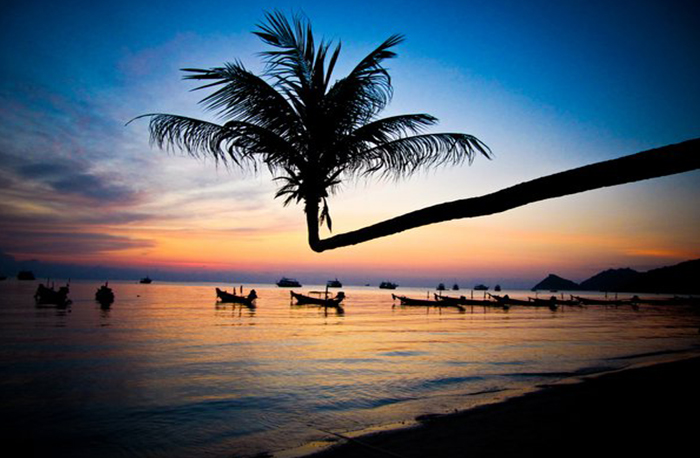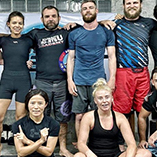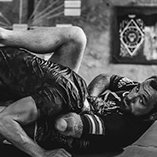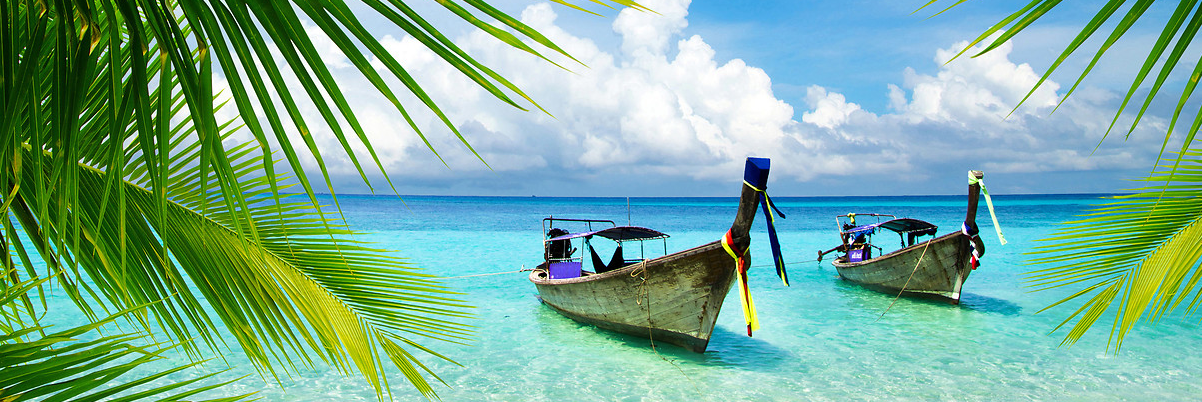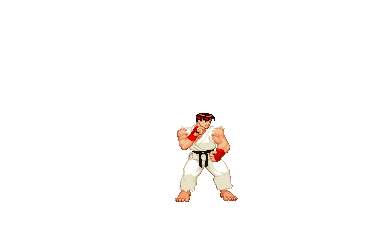Brazilian jiu-jitsu (//; Portuguese: [ˈʒiw ˈʒitsu], [ˈʒu ˈʒitsu], [dʒiˈu dʒiˈtsu]) (BJJ) is a grappling art, combat sport, and a self defense system that focuses on grappling and especially ground fighting. Brazilian jiu-jitsu was formed from Kodokan Judo ground fighting (Ne-Waza) fundamentals that were taught to Carlos Gracie by master Mitsuyo Maeda. Brazilian jiu-jitsu eventually came to be its own art through the experimentations, practices, and adaptation from the Judo knowledge of Carlos and Helio Gracie, who then passed their knowledge onto their family.
BJJ promotes the concept that a smaller, weaker person can successfully defend against a bigger, stronger assailant by using leverage and proper technique, taking the fight to the ground – most notably by applying joint-locks and chokeholds to defeat the other person. BJJ training can be used for sport grappling tournaments (gi and no-gi) and mixed martial arts (MMA) competition or self-defense. Sparring(commonly referred to as "rolling") and live drilling play a major role in training, and a premium is placed on performance, especially in competition, in relation to progress and ascension through its ranking system.
Since its inception in 1914, its parent art of Judo was separated from older systems of Japanese ju-jitsu by an important difference that was passed on to Brazilian jiu-jitsu: it is not solely a martial art: it is also a sport; a method for promoting physical fitness and building character in young people; and, ultimately, a way (Do) of life.[
Muay Thai (Thai: มวยไทย, RTGS: Muai Thai, is a combat sport from the muay martial arts of Thailand that uses stand-up striking along with various clinching techniques. This physical and mental discipline which includes combat on foot is known as "the art of eight limbs" because it is characterized by the combined use of fists, elbows, knees, shins and feet, being associated with a good physical preparation that makes a full-contact fighter very efficient. Muay Thai became widespread internationally in the twentieth century, when practitioners defeated notable practitioners of other martial arts. A professional league is governed by the World Muay Thai Council.
Muay boran, and therefore Muay Thai, was originally called by more generic names such as pahuyuth (from the Sanskrit bahu-yuddha meaning unarmed combat), Toi muay or simply muay. As well as being a practical fighting technique for use in actual warfare, muay became a sport in which the opponents fought in front of spectators who went to watch for entertainment. These muay contests gradually became an integral part of local festivals and celebrations, especially those held at temples. Eventually, the previously bare-fisted fighters started wearing lengths of hemp rope around their hands and forearms. This type of match was called muay khat chueak (มวยคาดเชือก). Kickboxing was also a component of military training and gained prominence during the reign of King Naresuan in 1560 CE.
Muay Thai is referred to as the "Art of Eight Limbs" or the "Science of Eight Limbs", because it makes use of punches, kicks, elbows and knee strikes, thus using eight "points of contact", as opposed to "two points" (fists) in boxing and "four points" (hands and feet) used in other more regulated combat sports, such as kickboxing and savate. A practitioner of muay Thai is known as a nak muay. Western practitioners are sometimes called Nak Muay Farang, meaning "foreign boxer."
Mixed martial arts (MMA) is a full contact combat sport that allows the use of both striking and grappling techniques, both standing and on the ground, from a variety of other combat sports. Various mixed style contests took place throughout Europe, Japan and the Pacific Rim during the early 1900s. The combat sport of vale tudo that had developed in Brazil from the 1920s was brought to the United States by the Gracie family in 1993 with the founding of the Ultimate Fighting Championship (UFC).
The more dangerous vale-tudo-style bouts of the early UFCs were made safer with the implementation of additional rules, leading to the popular regulated form of MMA seen today. Originally promoted as a competition with the intention of finding the most effective martial arts for real unarmed combat situations, competitors were pitted against one another with minimal rules. Later, fighters employed multiple martial arts into their style while promoters adoptedadditional rules aimed at increasing safety for competitors and to promote mainstream acceptance of the sport. The name mixed martial arts was coined by television critic Howard Rosenberg, in 1993, in his review of UFC 1. The term gained popularity when the website newfullcontact.com, then one of the biggest covering the sport, hosted and reprinted the article. Following these changes, the sport has seen increased popularity with a pay-per-view business that rivals boxing and professional wrestling.
Boxing (pugilism, prize fighting, the sweet science or in Greek pygmachia) is a combat sport in which two people engage in a contest of strength, speed, reflexes, endurance, and will by throwing punches with gloved hands against each other.
Amateur boxing is an Olympic and Commonwealth sport and is a common fixture in most of the major international games—it also has its own World Championships. Boxing is supervised by a referee over a series of one- to three-minute intervals called rounds. The result is decided when an opponent is deemed incapable to continue by a referee, is disqualified for breaking a rule, resigns by throwing in a towel, or is pronounced the winner or loser based on the judges' scorecards at the end of the contest.
The origin of boxing may be its acceptance by the ancient Greeks as an Olympic game in BCE 688. Boxing evolved from 16th- and 18th-century prizefights, largely in Great Britain, to the forerunner of modern boxing in the mid-19th century, again initially in Great Britain and later in the United States.
10th Planet Jiu-Jitsu is a non-traditional system of Brazilian Jiu-Jitsu developed by Eddie Bravo. It was one of the first Jiu-Jitsu school systems to not use a gi.
In 2003, after earning a black belt under Jean-Jacques Machado, Eddie Bravo opened his first 10th Planet Jiu-Jitsu school in Los Angeles, California. Bravo's system emphasizes developing students for submission-only grappling competition rather than points. He focused his jiu-jitsu training without the traditional gi, becoming one of the first jiu-jitsu schools to do so. The idea behind this was to try to implement as many of the techniques as possible in mixed martial arts (MMA) competitions. Bravo worked for the Ultimate Fighting Championship (UFC) during this time and felt high-level jiu-jitsu practitioners weren't winning as much they should have, mainly attributing this to them wearing a gi when training jiu-jitsu but competing in MMA without one.[1] 10th Planet Jiu-Jitsu has been controversial since its inception. Bravo's changes to traditional Brazilian Jiu-Jitsu, like abandoning the gi, drew a lot of backlash and there has been debate to how much 10th Planet techniques, most notably its iterations of the rubber guard, translates to MMA.
In addition to the original 10th Planet headquarters in Los Angeles, there are over 100 schools worldwide. Some are established BJJ training facilities that have adopted the system as an expansion of the art. The style has spread overseas to the United Kingdom[3], Germany[4], Sweden, Australia[5] and Korea.
Victory Belt Publishing released three manuals covering techniques of the 10th Planet system: Mastering the Rubber Guard,[6] Mastering the Twister,[7] and Advanced Rubber Guard.[8] The first and third books cover the system's signature rubber guard, while the second tackles the twister, another integral position in the system. The books were written by Eddie Bravo, Glen Cordoza, and Erich Krauss.
Eddie Bravo also airs an hour to two hour online series every month on his website.
